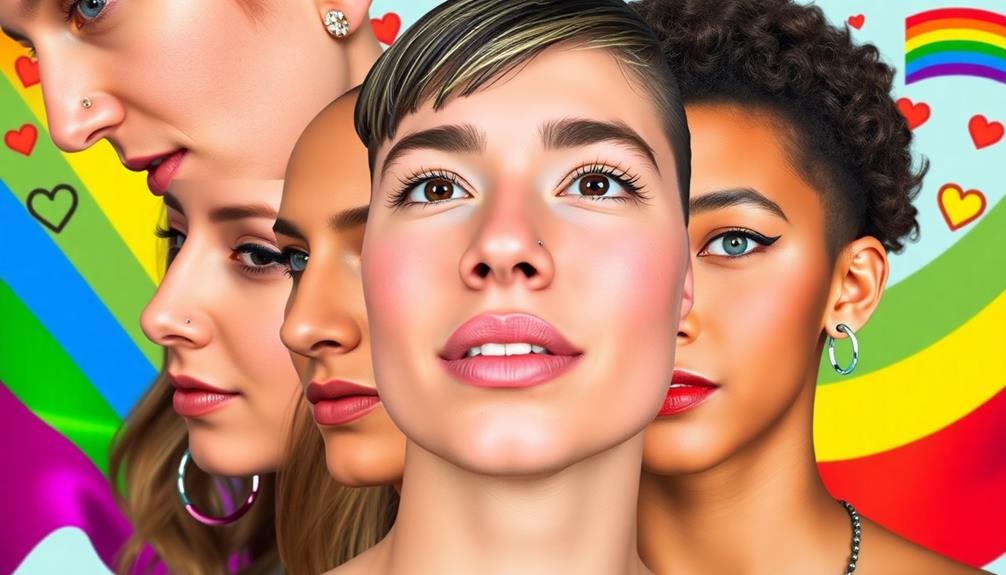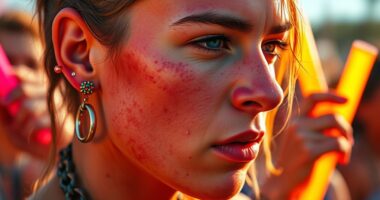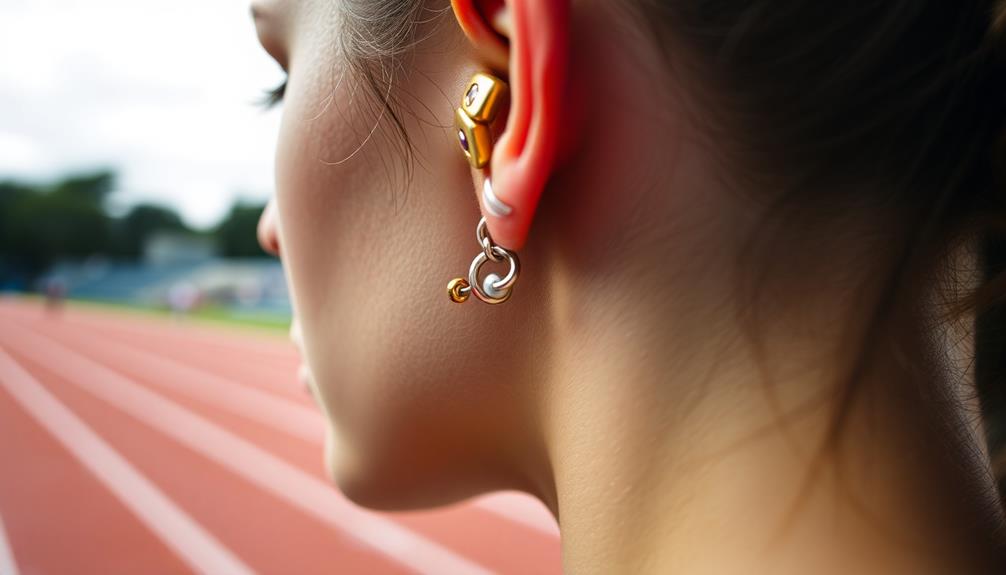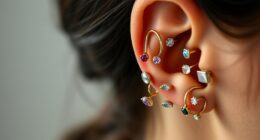Piercings in the LGBTQ+ community have a rich history rooted in self-expression and identity affirmation. They've gained visibility since the punk movement of the 1970s and have become symbols of pride and rebellion. You might notice that different piercings reflect gender identity and can enhance body image, offering a temporary solution for those maneuvering dysphoria. Additionally, piercings play a significant role in kink culture, emphasizing agency and consent. Despite societal stigma, they serve as vital bonding experiences. Understanding their historical and cultural context reveals how deeply they resonate within the community today.
Key Takeaways
- Body piercings have historically served as a form of self-expression and identity affirmation within queer cultures, particularly since the punk movement of the 1970s.
- Piercings enhance body image and provide temporary gender identity affirmation, offering alternatives to permanent surgical procedures for many in the LGBTQ+ community.
- Kink culture significantly influences piercing practices, symbolizing personal empowerment and community values of consent and agency in sexuality.
- Visible piercings often face societal discrimination, intersecting with biases against sexual orientation and affecting job prospects and healthcare experiences.
- Modern piercing trends in the LGBTQ+ community emphasize individuality, with social media showcasing diverse styles and Pride Month inspiring inclusive designs.
Historical Significance of Piercings
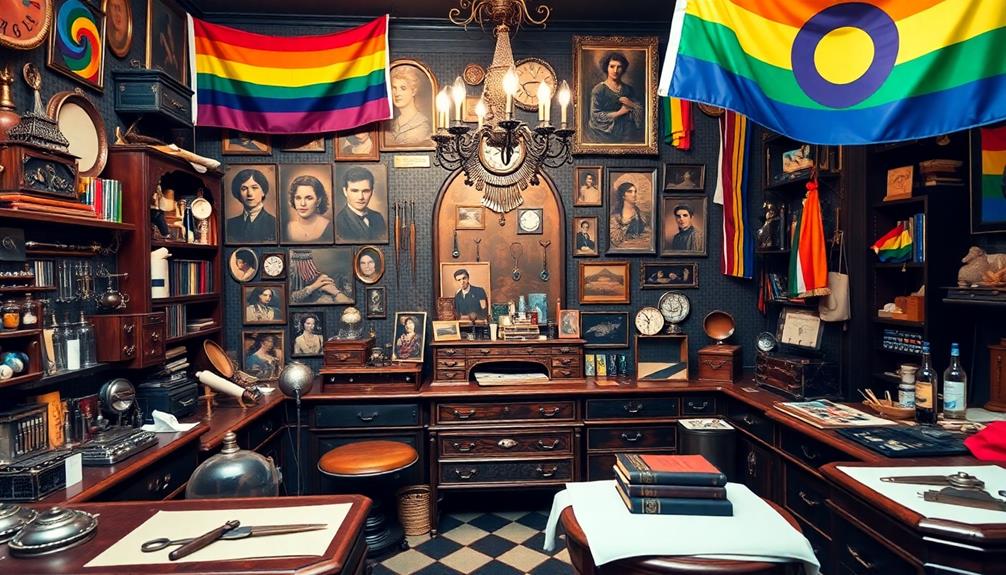
Body piercing has deep historical roots, serving as a powerful form of self-expression and identity affirmation within queer cultures. Throughout history, body modification has played a significant role in shaping how individuals communicate their gender identity and personal beliefs.
In the 1970s, the punk movement propelled body piercings into the mainstream, creating a visual language for the queer community that defied societal norms. One notable development was the emergence of the "gay ear" signaling system, where wearing earrings in specific ears indicated sexual orientation. This practice underscored how body piercings became symbols of identity and resistance.
The Stonewall Riots in 1969 sparked the first Pride celebrations in 1970, further intertwining body piercings with the fight for LGBTQ+ rights. Influential figures in body piercing history, like Jim Ward and Mr. Sebastian, established piercing studios that prioritized safety and professionalism, helping to normalize body modifications.
Their efforts fostered a community that valued both artistic expression and personal safety. As cultural attitudes evolved, the visibility of piercings within queer, trans, and kink communities increased, marking a significant chapter in the ongoing dialogue about identity and self-affirmation.
Piercings and Gender Affirmation
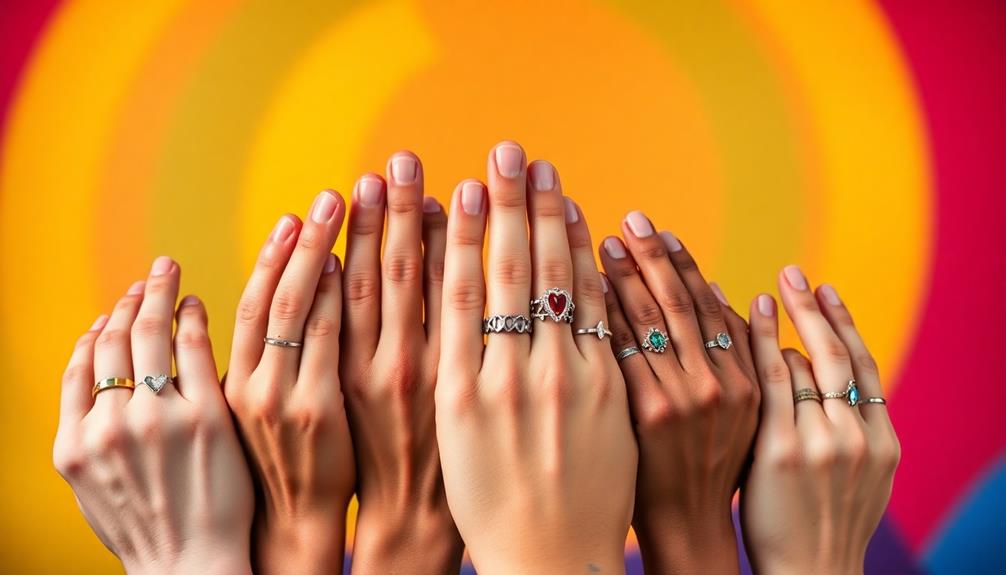
When you consider body image, piercings can serve as powerful tools for enhancing your sense of self.
They offer temporary solutions for gender affirmation, allowing you to express your identity without the permanence of surgery.
Embracing these modifications can help you feel more in tune with your body and your authentic self.
Body Image Enhancement
Throughout history, piercings have emerged as a powerful means of body image enhancement, especially within the LGBTQ+ community. For many, these modifications serve as a cost-effective way to affirm gender identity and alleviate feelings of dysphoria. By choosing specific piercings, you can align your physical appearance with how you see yourself, enhancing your connection to your body.
Consider these aspects of body image enhancement through piercings:
- Nipple and clitoral hood piercings can deepen body connection for cisgender women.
- Prince Albert piercings can reflect gender identity expression for transgender men.
- Large gauge labia piercings provide a physical reminder of male anatomy.
- Piercings promote personal expression and reclaiming body autonomy.
- This practice fosters body acceptance and empowerment within the queer community.
These enhancements allow you to visibly express your gender identity, providing a sense of confidence in a world that often challenges it.
Ultimately, piercings are more than aesthetic choices; they play a significant role in shaping how you perceive and embrace your body, reaffirming your right to define your identity authentically.
Temporary Affirmation Solutions
Piercings can serve as an accessible and effective way to affirm your gender identity, offering a temporary solution for those traversing the complexities of gender expression. Many individuals within the queer community find that piercings provide a cost-effective means to align their physical appearance with their gender identity without the commitment of surgical procedures.
For transgender individuals, options like nipple or clitoral hood piercings can enhance body connection and alleviate gender dysphoria, promoting a sense of comfort in their bodies. Large gauge labia piercings can also serve as a physical reminder of male anatomy, acting as a meaningful yet temporary solution for gender affirmation.
Unlike permanent surgeries, piercings allow you to explore your identity while maintaining body autonomy, giving you the freedom to change or remove them as needed.
The growing acceptance of piercings within the queer community underscores their significance as a valid expression of gender identity. Through these temporary solutions, you can navigate your journey of self-discovery, reflecting and affirming who you're in a way that feels right for you.
Kink Culture and Activism
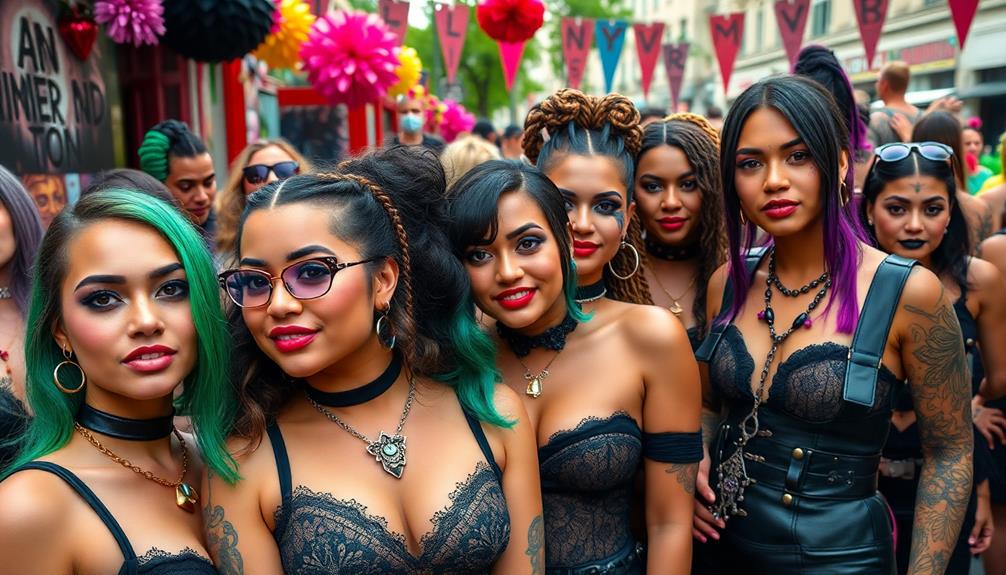
Kink culture has remarkably shaped how piercings are viewed and used within the LGBTQ+ community, emphasizing personal agency and consent.
When you participate in BDSM practices, piercings can serve as powerful symbols of empowerment and connection.
This intersection of kink and body modification highlights the importance of individual narratives in queer activism.
Kink's Influence on Piercings
Empowerment and self-expression resonate deeply within the LGBTQ+ community, particularly through the lens of kink culture and its influence on body piercings. For many queer people, body piercings symbolize personal identity and empowerment, especially within BDSM communities. These piercings often serve as markers of belonging and resistance against societal norms.
Here are some key aspects of kink's influence on piercings:
- Play Piercings: Temporary piercings used for aesthetic pleasure, enhancing the visual experience.
- Suspension Practices: Meditative experiences that foster connection and community among participants.
- Historical Roots: Kink's integration into pride events since the 1950s, reflecting its significance in queer activism.
- Symbols of Consent: Piercings embody the community's values of consent and agency in expressing one's sexuality.
- Ongoing Debates: Discussions about kink representation at pride events highlight the need for inclusivity within LGBTQ+ spaces.
Through these elements, kink culture continues to shape how body piercings are perceived and embraced, reinforcing a sense of identity and community among queer individuals.
Consent and Personal Agency
Steering the intricate relationship between consent and personal agency reveals how deeply these concepts are woven into the fabric of LGBTQ+ activism, particularly within kink culture. In this setting, body piercings take on significant meanings, symbolizing empowerment and the necessity of mutual agreement. The integration of consent in kink practices emphasizes the importance of personal agency, allowing individuals to express their identities freely.
Here's a closer look at how consent and personal agency manifest in kink culture:
| Aspect | Description | Significance |
|---|---|---|
| Consent | Mutual agreement in practices | Guarantees safety and respect |
| Personal Agency | Control over one's body and choices | Fosters empowerment |
| Queer Representation | Inclusion of diverse identities | Validates varied expressions |
| Body Piercings | Marks of identity and exploration | Symbolizes personal empowerment |
| Kink at Pride | Ongoing debates about inclusivity | Reflects broader LGBTQ+ activism |
Engaging in play piercings within BDSM not only serves aesthetic purposes but also highlights the consensual exploration of pain. This intricate dance of consent and personal agency continues to shape the LGBTQ+ community, fostering a deeper understanding of identity and expression.
Societal Perceptions and Discrimination
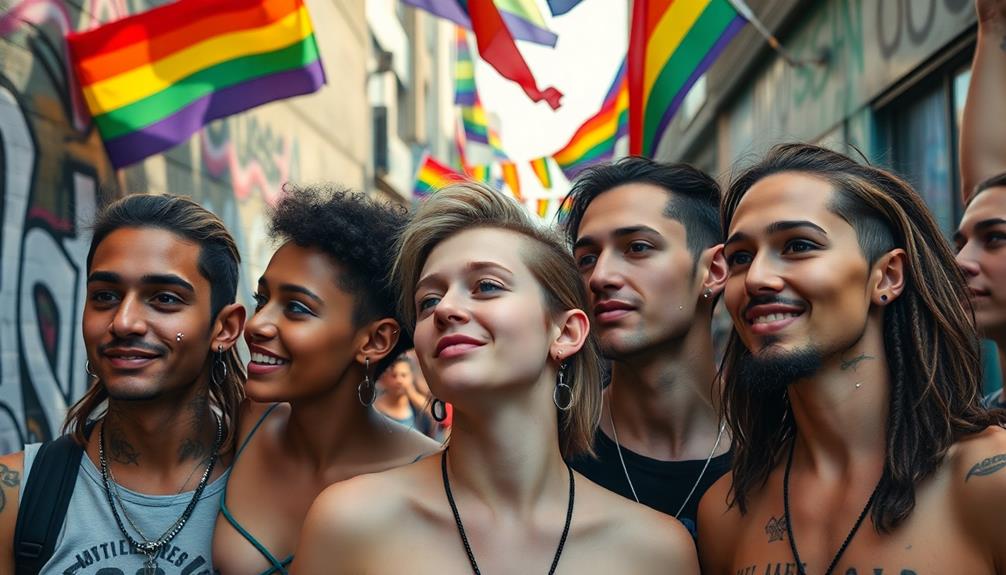
Visible piercings often become a focal point of discrimination, impacting individuals in both queer and mainstream societies. You might notice that stigmas surrounding body modifications often intersect with biases against sexual orientation or gender identity. This discrimination can manifest in various settings, making life more challenging for those with visible piercings.
- Medical professionals may prioritize the removal of piercings over providing appropriate healthcare.
- Negative societal perceptions can lead to assumptions about employability, affecting job prospects.
- Individuals with piercings often face barriers to accessing essential services.
- Discrimination can exacerbate existing inequalities within healthcare for marginalized groups.
- Queer folks with visible piercings may experience heightened scrutiny and isolation.
These factors create a complex landscape where visible piercings trigger prejudiced assumptions, hindering access to opportunities and support.
Whether in healthcare or employment, the biases against body modifications contribute to broader systemic challenges faced by queer communities. As you navigate these societal perceptions, it's vital to recognize that discrimination based on appearance can have significant consequences, reinforcing the need for ongoing advocacy and change.
Personal Stories and Community Impact
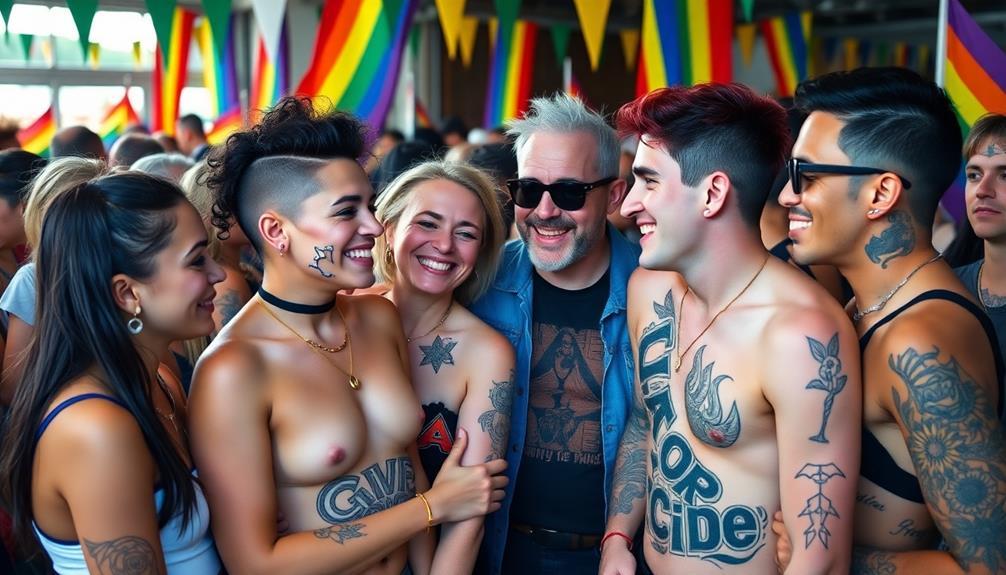
While discrimination based on piercings can create significant barriers, personal stories from the LGBTQ+ community reveal how these body modifications can also foster identity affirmation and connection. Many individuals share transformative experiences tied to their piercings, marking key milestones in their self-discovery.
You might find that for some, a piercing represents a powerful rebellion against societal norms, allowing for authentic expression of unique identities that challenge traditional gender presentations.
These personal narratives illustrate how piercings act as symbols of acceptance and pride, helping you assert your queer identity and feel a sense of belonging within the community. The act of getting pierced often becomes a communal bonding experience, where shared stories create solidarity among individuals who've faced similar struggles.
Additionally, the practice of gifting piercings among friends within the LGBTQ+ community highlights the love and connection that piercings can embody. This exchange emphasizes the importance of personal expression and shared experiences in building a supportive community.
Ultimately, piercings serve not just as body modifications, but as essential markers of identity, connection, and pride in your journey.
Contemporary Trends in Piercing
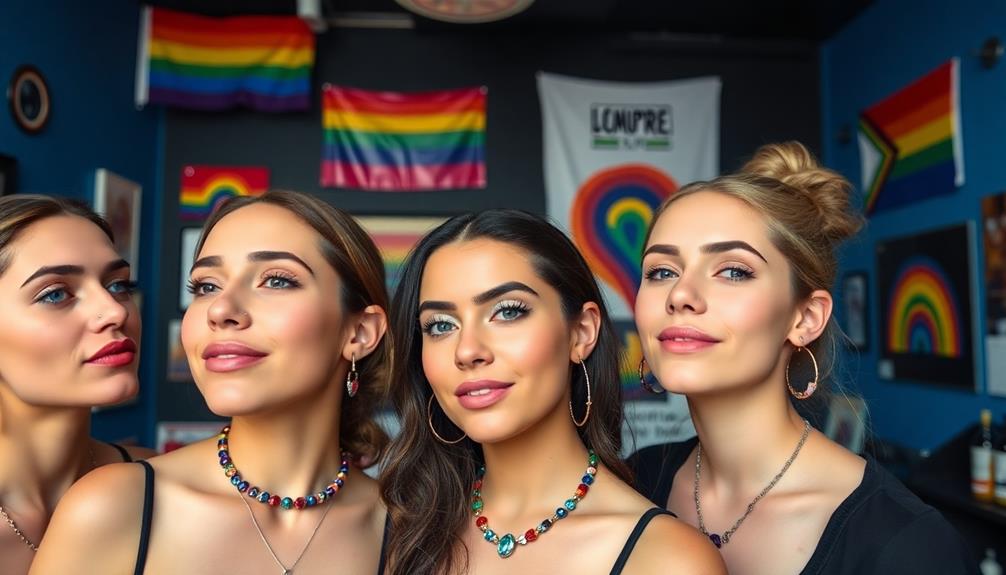
In recent years, contemporary trends in piercing within the LGBTQ+ community have increasingly emphasized personal identity and self-expression.
You'll find that modern body piercing serves as a powerful form of expression, especially among gay men and others who challenge the gender binary. The rise of social media has allowed individuals to showcase their unique styles, leading to a vibrant community where creativity thrives.
During events like Pride Month, many people opt for piercings that reflect their LGBTQ+ pride, incorporating symbols and colors that resonate with their identities. This trend not only reinforces community bonds but also enhances visibility.
Key contemporary trends include:
- Visible piercings that display LGBTQ+ symbols
- Custom jewelry designed for inclusivity
- Innovative combinations of piercings and tattoos
- Unique placement styles that defy traditional norms
- A focus on self-expression through personal narratives
As awareness and acceptance of body modifications grow, piercing studios increasingly cater to the diverse needs of the queer and trans community.
These contemporary trends in piercing reflect a broader cultural movement towards embracing individuality and celebrating one's unique identity.
Frequently Asked Questions
What Is the Historical Significance of Piercings?
Piercings have a rich history, serving as powerful symbols of self-expression and identity. You can trace their significance back to ancient cultures, where they often represented status, spirituality, and personal freedom, challenging societal norms throughout time.
What Is the Symbolism of Piercings?
Did you know that 75% of people with piercings feel more confident? Piercings symbolize individuality and self-expression, allowing you to embrace your identity and rebel against societal norms while forging deeper connections within your community.
What Is the Cultural Significance of Ear Piercing?
Ear piercing's cultural significance lies in its role as self-expression and rebellion against norms. You can embrace individuality, convey identity, and challenge societal expectations, making ear piercings a powerful statement of who you are.
What Is the History of Ear Piercing and Slavery?
You might think ear piercing is just a fashion statement, but it's steeped in history. During slavery, it marked ownership, while also serving as a form of cultural expression and resistance for enslaved individuals.
Conclusion
In the vibrant tapestry of the LGBTQ+ community, piercings serve as shimmering symbols of identity and expression. They're not just adornments; they're whispers of personal journeys and bold statements of affirmation. As you explore this colorful world, you'll see how these tiny treasures can challenge norms and celebrate individuality. Embracing your own unique style through piercings can be a powerful way to connect with your community, revealing the beauty in diversity and the strength in authenticity.
Hi, my name is Danielle, and I’m an author for piercings-body.com. I have a passion for writing and love to share my knowledge on all things body piercing-related. I’m also a huge advocate for safe body modification practices and believe everyone should be able to make informed decisions about their bodies. When I’m not writing or blogging, I enjoy spending time with my family and friends, practicing yoga, and exploring new places.

